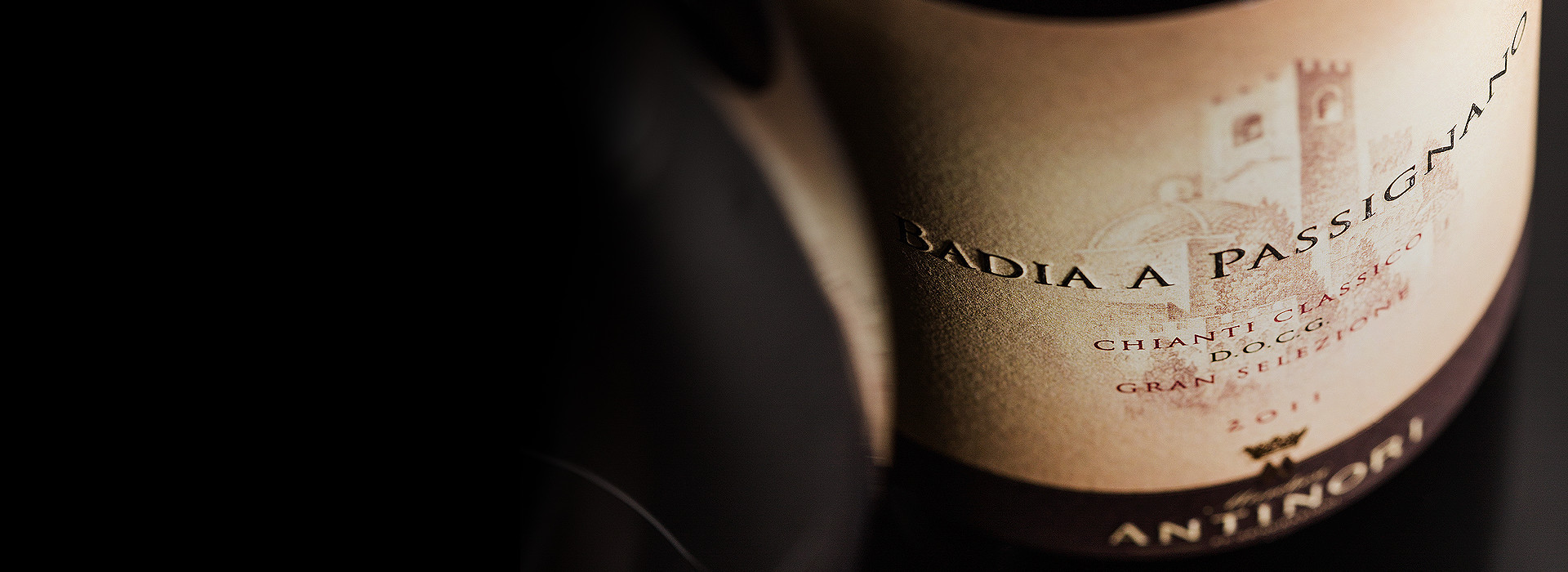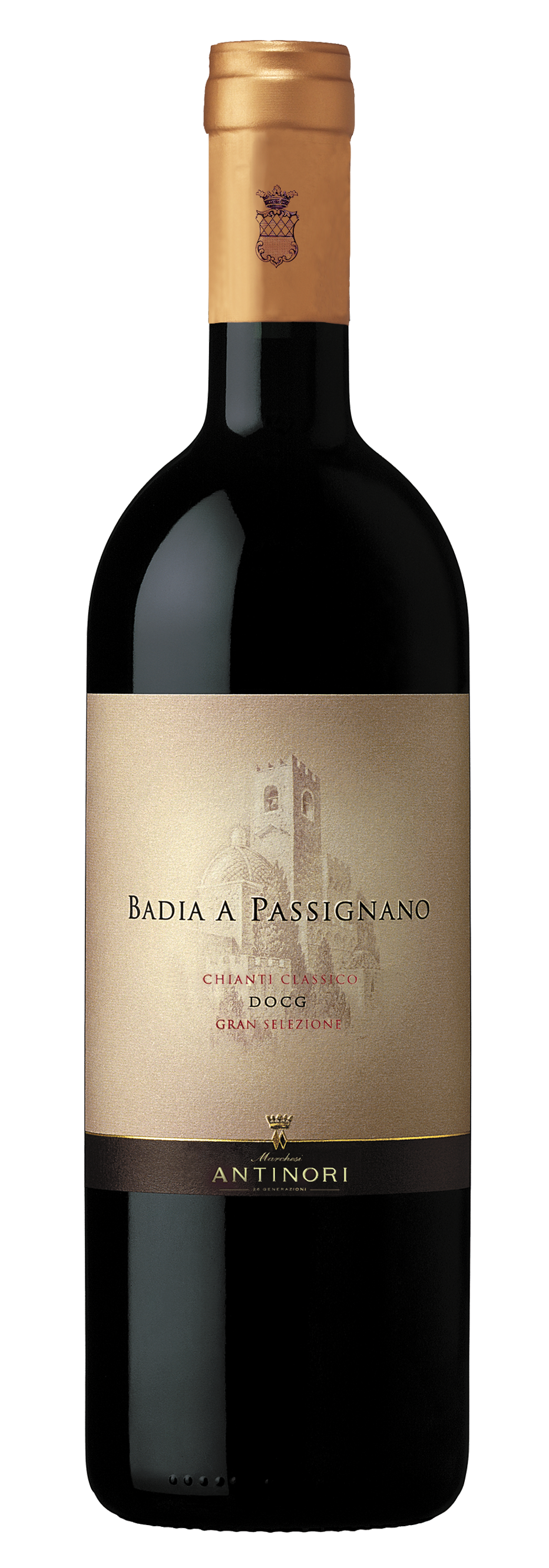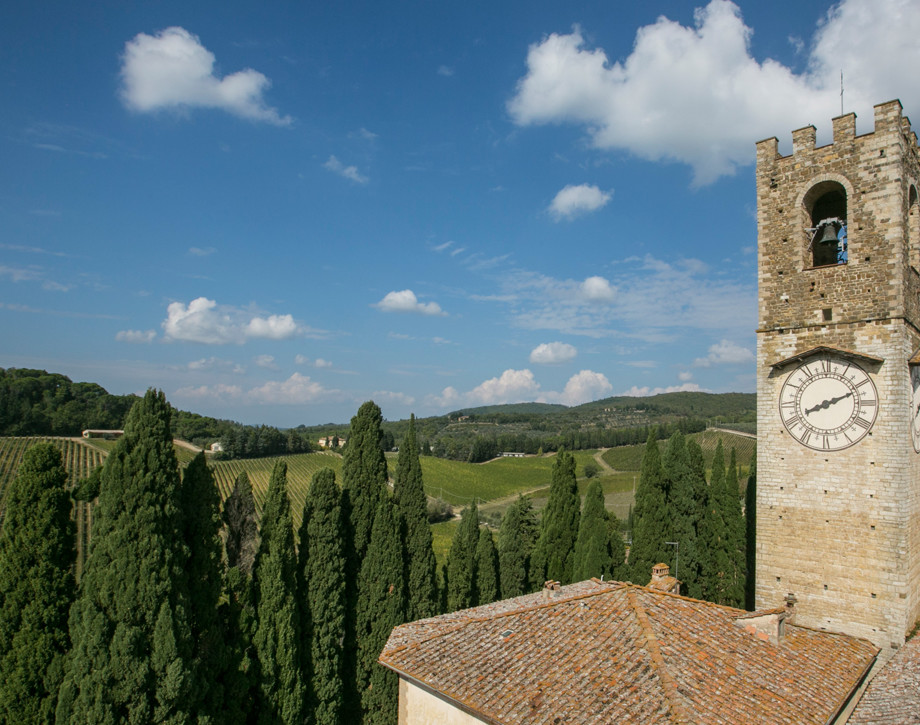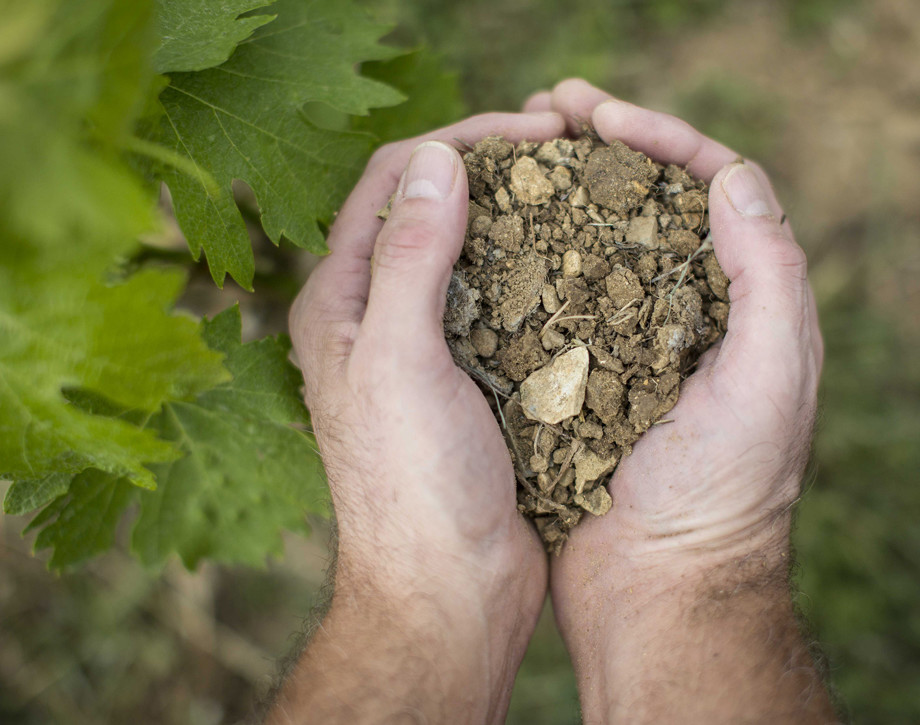Badia a Passignano

Climate
Late autumn 2010 and winter 2011 were characterized by cold and rainy weather, and the final days of 2010 were marked by both snowfall and frigid weather. Early 2011, instead, was dry, and the initial period of spring mild in temperature, relieved fears of a return of cold weather. This continued in early April, leading to a precocious bud-burst, ten days ahead of the normal period. The growing season began favorably with low precipitation and balmy temperatures, and in July the phases of growth of development returned to the norm. Temperatures began to rise sharply after August, 10th and remained high past mid-September, significantly slowing grape ripening. Picking began on September 27th and terminated during the first week of October.
Vinification
The grape berries were carefully selected after destemming and then delicately pressed. The fermentation lasted approximately ten days and was followed by an additional 10-12 days of skin contact. After being run off its skins, the wine went into small oak barrels for the malolactic fermentation, which finished spontaneously by the end of the year. The separate lots of wine were then racked and, aged separately in barrel on the basis of the various vineyard provenances; the barrels, coopered from Hungarian oak, were of varying capacity, from 60 gallons to 80 and 130 gallons (225, 300, and 500 liters). The total aging period lasted18 months before bottling, and a further twelve month period of bottle aging preceded commercial release.
Historical data
Badia a Passignano Gran Selezione is produced exclusively from the finest Sangiovese grapes harvested from its namesake vineyard located in the heart of the Chianti Classico region. The region has been respected and appreciated for its outstanding wine production since the year 1000. The vineyards grow at an altitude of approximately 300 meters (984 feet) above sea level on soils rich in limestone with a fair amount of clay. The wine is aged in the historic cellars under the Badia (abbey) of Passignano that dates back to the 10th century.
Tasting Notes
An intense ruby red in color, the wine shows aromas both of fruit and the typical sensations of oak, which fuse harmonically and offer as well balsamic and graphite notes on the nose. The palate is rich, with supple and balanced tannins along with the vibrant freshness typical of Sangiovese. The finish and aftertaste are of notable persistence and repeat the notes of berry fruit first felt on the nose.
Awards
James Suckling 94/100 USA Wine Enthusiast 92/100 USA Antonio Galloni 93/100 USA

The Wine
Badia a Passignano Gran Selezione is produced exclusively from the finest Sangiovese grapes harvested from its namesake vineyard located in the heart of the Chianti Classico region. The region has been respected and appreciated for its outstanding wine production since the year 1000. The vineyards grow at an altitude of approximately 300 meters (984 feet) above sea level on soils rich in limestone with a fair amount of clay. The wine is aged in the historic cellars under the Badia (abbey) of Passignano that dates back to the 10th century.

Climate
Late autumn 2010 and winter 2011 were characterized by cold and rainy weather, and the final days of 2010 were marked by both snowfall and frigid weather. Early 2011, instead, was dry, and the initial period of spring mild in temperature, relieved fears of a return of cold weather. This continued in early April, leading to a precocious bud-burst, ten days ahead of the normal period. The growing season began favorably with low precipitation and balmy temperatures, and in July the phases of growth of development returned to the norm. Temperatures began to rise sharply after August, 10th and remained high past mid-September, significantly slowing grape ripening. Picking began on September 27th and terminated during the first week of October.
Vinification
The grape berries were carefully selected after destemming and then delicately pressed. The fermentation lasted approximately ten days and was followed by an additional 10-12 days of skin contact. After being run off its skins, the wine went into small oak barrels for the malolactic fermentation, which finished spontaneously by the end of the year. The separate lots of wine were then racked and, aged separately in barrel on the basis of the various vineyard provenances; the barrels, coopered from Hungarian oak, were of varying capacity, from 60 gallons to 80 and 130 gallons (225, 300, and 500 liters). The total aging period lasted18 months before bottling, and a further twelve month period of bottle aging preceded commercial release.
Historical data
Badia a Passignano Gran Selezione is produced exclusively from the finest Sangiovese grapes harvested from its namesake vineyard located in the heart of the Chianti Classico region. The region has been respected and appreciated for its outstanding wine production since the year 1000. The vineyards grow at an altitude of approximately 300 meters (984 feet) above sea level on soils rich in limestone with a fair amount of clay. The wine is aged in the historic cellars under the Badia (abbey) of Passignano that dates back to the 10th century.
Tasting Notes
An intense ruby red in color, the wine shows aromas both of fruit and the typical sensations of oak, which fuse harmonically and offer as well balsamic and graphite notes on the nose. The palate is rich, with supple and balanced tannins along with the vibrant freshness typical of Sangiovese. The finish and aftertaste are of notable persistence and repeat the notes of berry fruit first felt on the nose.
Awards
James Suckling 94/100 USA Wine Enthusiast 92/100 USA Antonio Galloni 93/100 USA

Badia a Passignano
Badia a Passignano is located above the town of Sambuca Val di Pesa, just 3 kilometers south of the Tenuta Tignanello estate. The property extends over an area of 223 hectares (551 acres), of which 65 hectares (160 acres) are planted with vines. The vineyards grow at an altitude that varies between 250 meters (820 feet) and 300 meters (984 feet) above seal level on calcareous soil in one of the most naturally endowed and beautiful environments in the Chianti Classico region. The estate’s historical importance in the Chianti region is well documented in hundreds of volumes that are kept in the Florence State Archives that provide descriptions and details about the Sangiovese vineyards and local crops over the centuries. Further proof of this came to light in 1983 when a thousand year old vitis vinifera plant was discovered on the land surrounding Badia a Passignano.

Soil
Predominantly calcareous


















